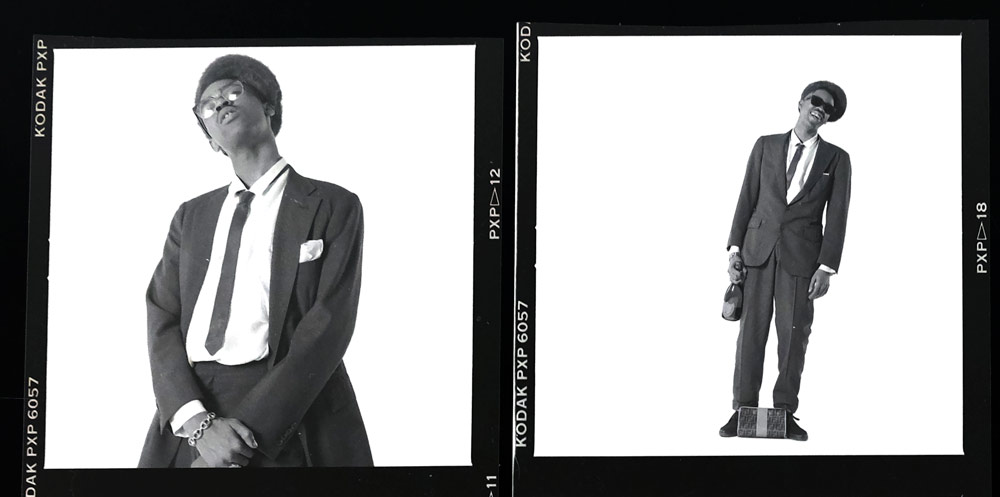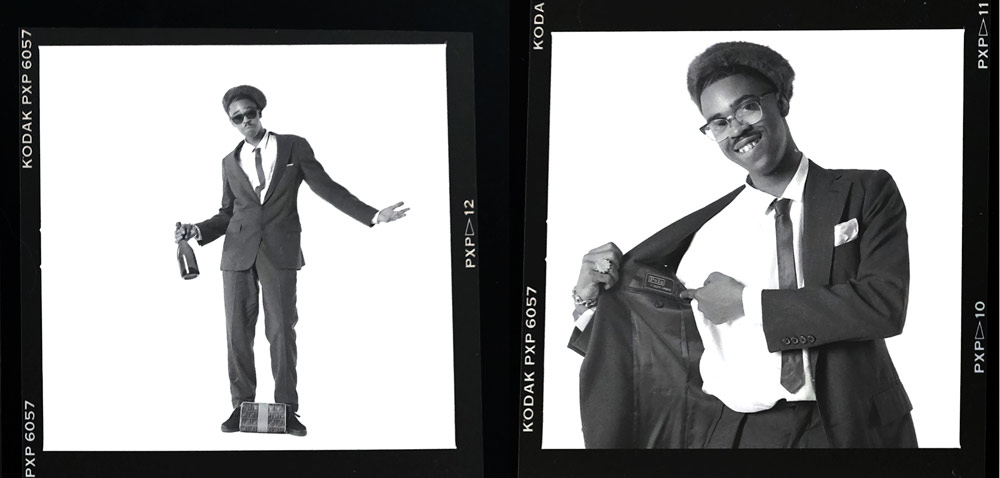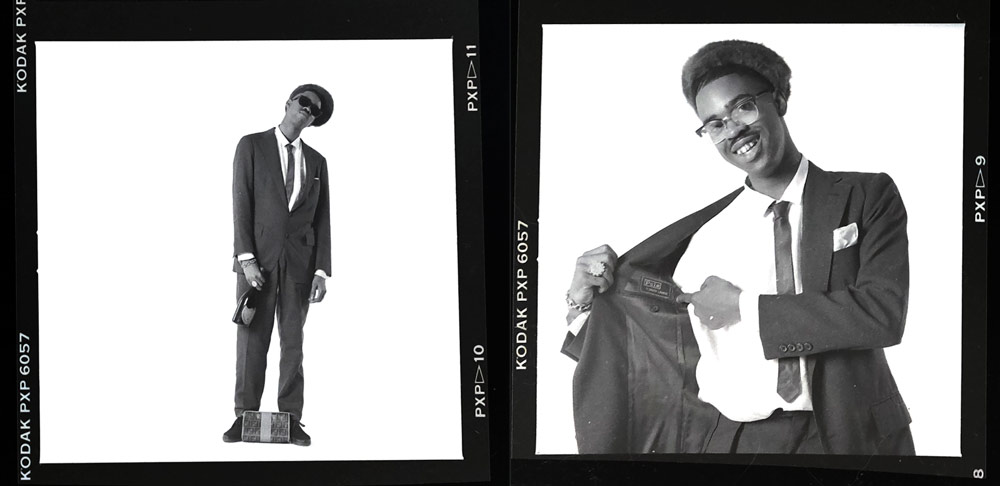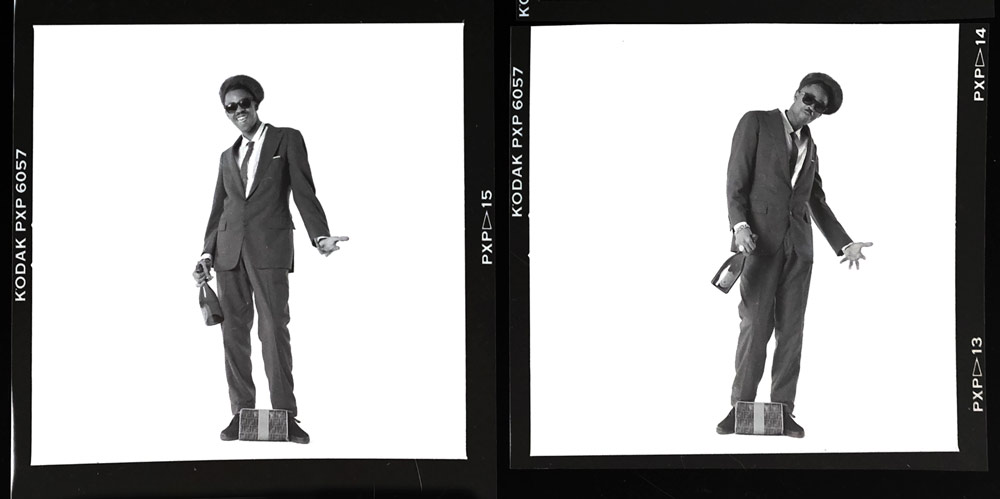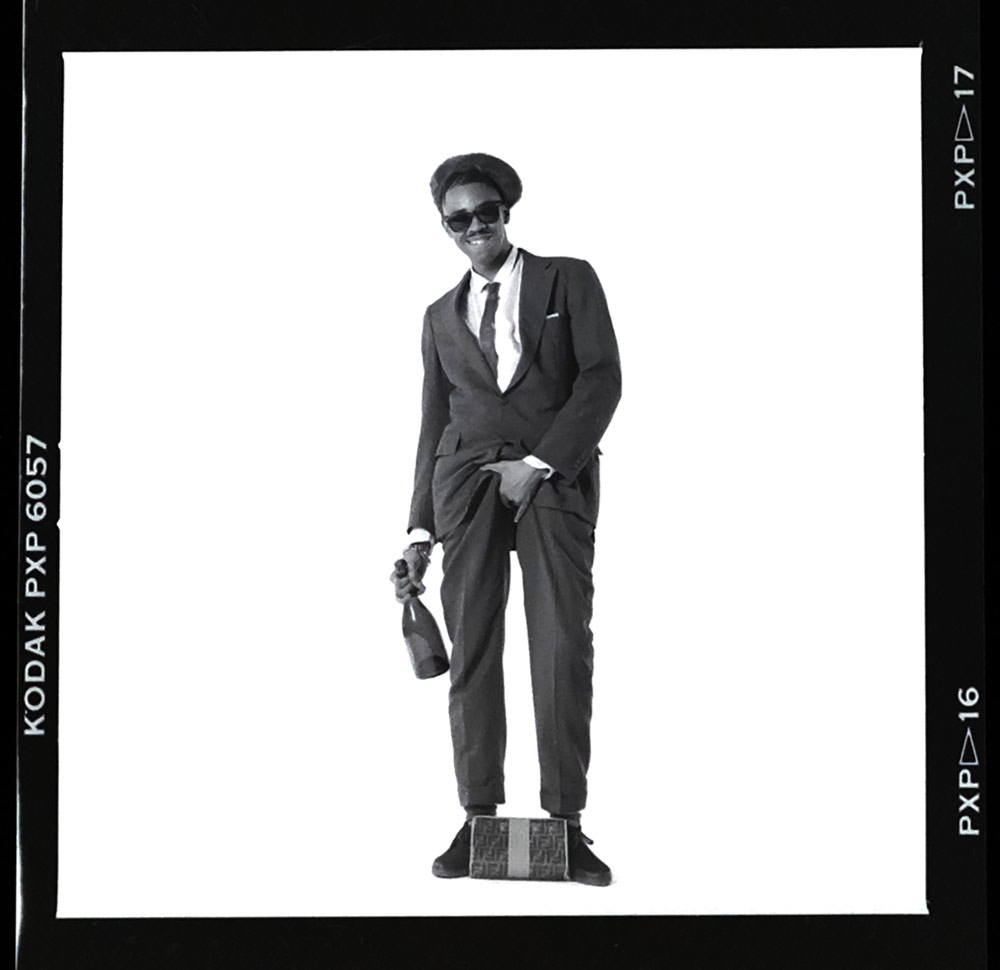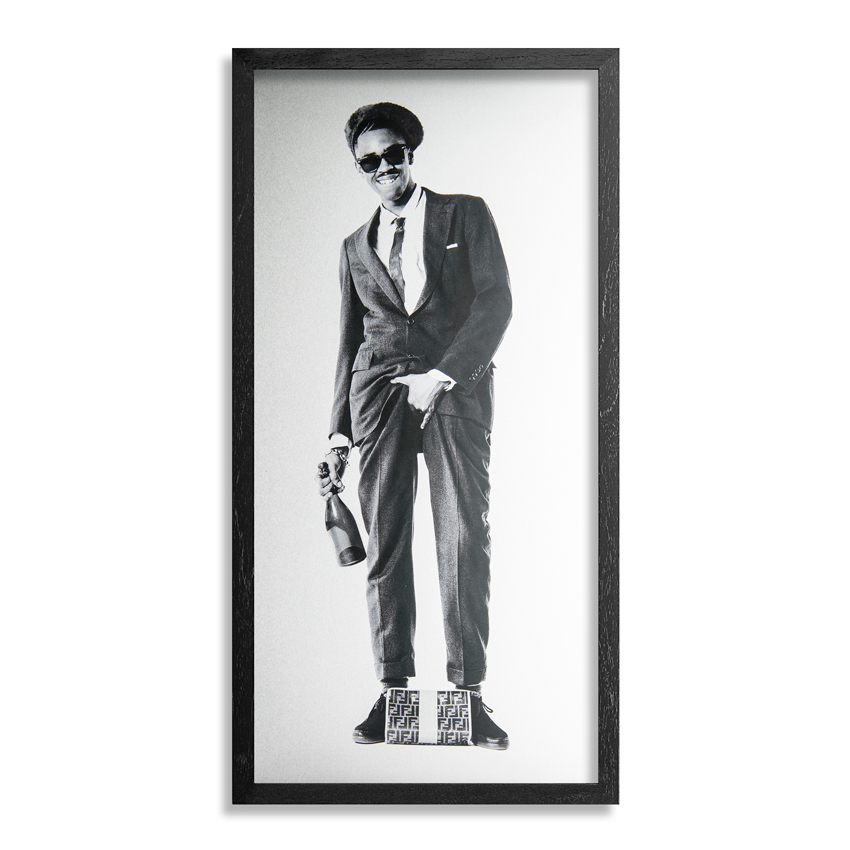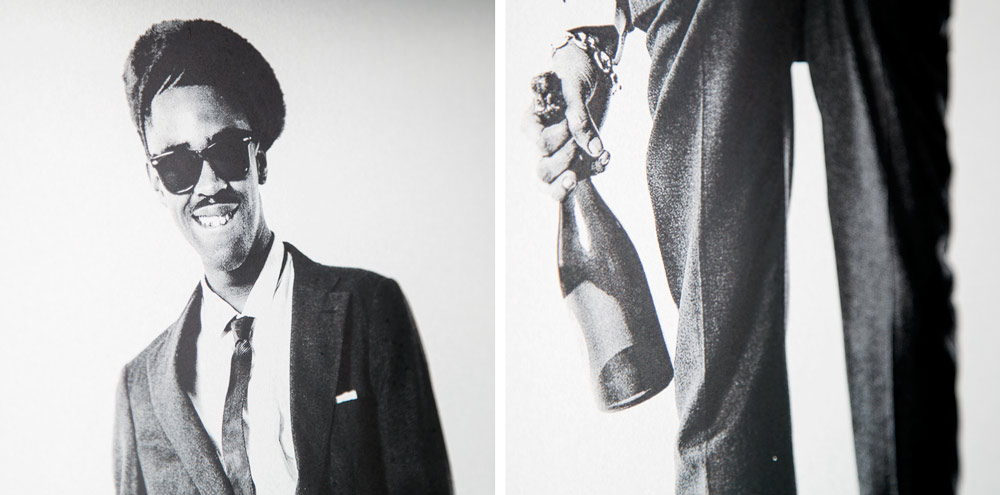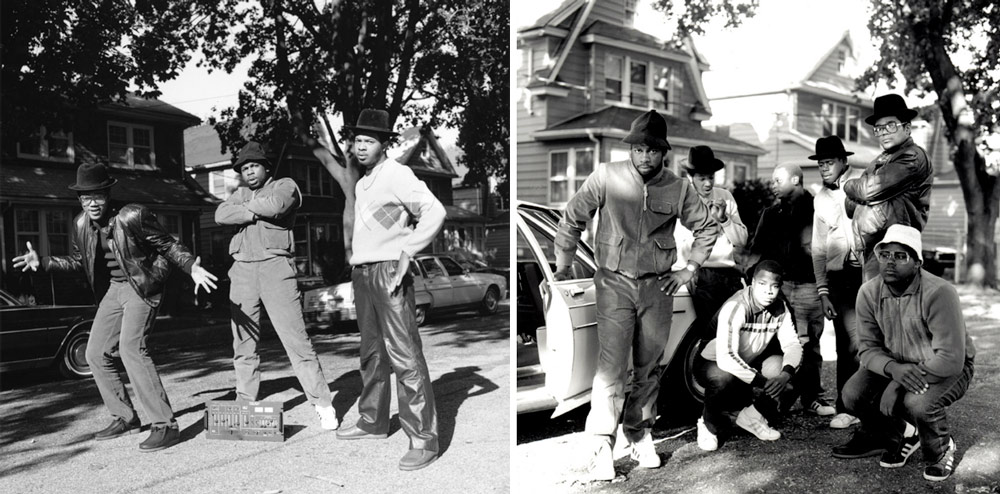Londoner Janette Beckman began her career at the dawn of punk rock working for likes of British music magazines The Face and Melody Maker. Early on she shot bands from The Clash to The Specials, as well as three of The Police’s album covers. Moving to New York in 1982, she was drawn to the underground hip-hop scene. Her photographs of pioneers Afrika Bambaata, Run DMC, Salt’ n ‘Pepa and Grandmaster Flash are some of the most iconic of the era. In 1989, while Beckman was shooting for Def Jam, musician Slick Rick stopped by her Manhattan studio and the photos capture the talented rapper at the his most unfiltered and honest. Be sure to grab your copy of Slick Rick Manhattan 1989 while you still can right here. Read on as we caught up with Beckman to discusses the current state of photography, the East Village in the 1980s and much more…
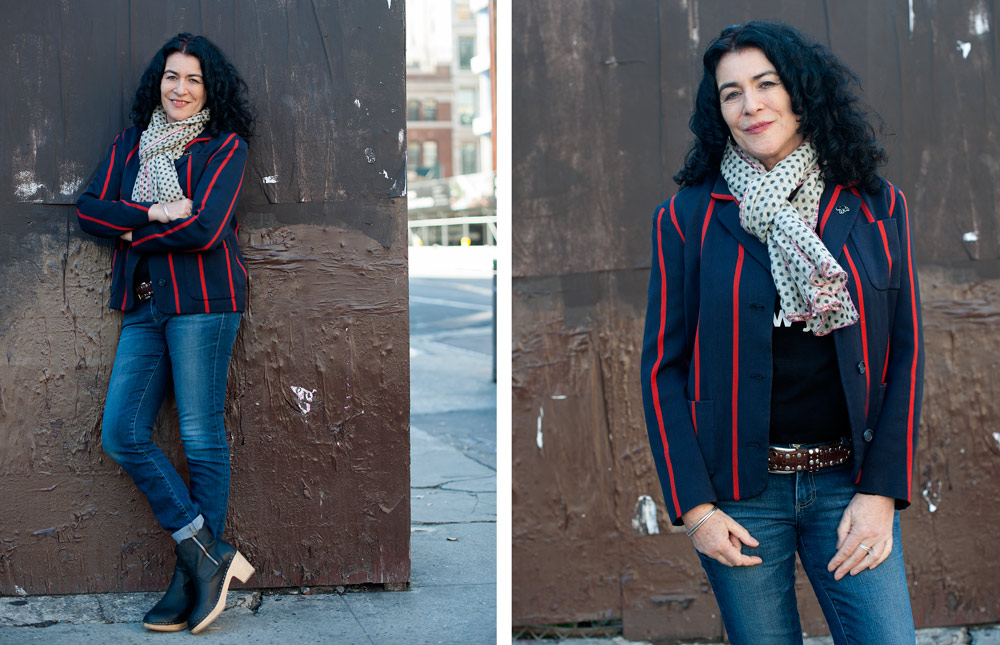
1xRUN: Tell us a little bit about this photo, anything immediate that jumps out about this photo to you?
Janette Beckman: I don’t really pose my people, but I always had a studio set up ready. Slick Rick came to my studio with Bill Adler, the press officer for Def Jam .They needed a press shot for him, we got a bottle of champagne and we’re sitting around, drinking champagne and chatting. Basically I had my spot marked out on the seamless and he stood there, put his bag down on the floor while holding the bottle, and then just snap, I took that picture within the first two minutes of the photo shoot and I knew that was it. We had the hang out and he was pretty happy. He just posed himself and I love that. To me that image was just so hip-hop.
There’s one other thing I want to say about his style. Slick Rick is a Brit, he was was born and raised in the south-west London to an English-Jamaican family. His style reminded me of the Jamaican kids I saw in Brixton, a bit ska, 2 tone, mod. He’s wearing a slim suit and a slim tie, he’s got a Kangol hat on. He’s kinda echoing that whole look.
1x: What was your camera set up?
Beckman: I always shot with a Hasselblad 21/4 camera back in the day.The thing was everything you shot cost money. You had to buy a roll of film, you had to get it developed and processed, then you had to make prints. It made you more careful when you were shooting. I didn’t shoot too many rolls, maybe 30-40 shots at the most. And we had to get it right, there was no “fix it in photoshop.”
1x: What type of processing did you use for the film?
Beckman: It was just Kodak black and white film, Tri X. I used to make my own prints in the dark room. It was really fun to go and make this print. Go in the dark room, play some good music and make some prints.. I always have minimal equipment. I just had one Hasselblad camera with two lenses. That was it. Right now I’m still the same way. I’ve still got one camera with two lenses. I don’t like to have a lot of stuff. I’m much more about the vibe between me and subject rather than having a load of lenses and doing a load of technical fancy things. I really want to keep it real between me and them.
1x: Did you know Slick Rick previously?
Beckman: I did not. That was my first meeting with him. I thought he was a crazy guy. Completely crazy. He comes in and drinks a bottle of champagne, jumps on my seamless, grabs his crotch and that was it. We had a good time. That’s all I remember. It was quite a long time ago.
1x: You mentioned you got this photo pretty quickly in the first few shots?
Beckman: I think probably in the first 5 shots I got that. That was the moment when he was completely fresh. He steps onto the seamless and puts his bag right down in front of his feet. He smiles at the camera holding the champagne bottle and that’s it. I said to myself I got the shot. I shot a few more just for ya yas, took a few more with him sitting in the chair, this that and a few other shots, but this one I knew right away when I took it that it was the one to be honest. It had to be.
1x: Was that a fairly typical set up when you were shooting press photos for Def Jam at the time?
Beckman: My usual M.O. (modus operandi) would be to have people come to the studio get a couple shots, then go outside and walk around the neighborhood a little bit. My studio was in downtown Manhattan, so there’s lots of different walls and stoops throughout neighborhoods at the time. I’ve got pictures of BDP (Boogie Down Productions) around the corner outside the 9th precinct police station. All sorts of things would happen on the street. I didn’t take Ricky onto the street because they wanted a studio shot.
But that is very typical of me. I still work like that. I really want the person to be happy, comfortable and natural. I want to capture them. I really feel it’s a collaboration between me and the subject. That’s what it’s always been about for me. I want to make a portrait of them, rather than imposing my idea of what I think they ought to look like. I always do a lot of chat. That’s how I get people to relax. I’ve always been very interested in people. When someone comes around the studio I want to know who are you? What are you all about? We’re going back and forth and communicating, then I can take a quick picture and that’s it. I find it’s the best way. I don’t often have plans, other than I may scout the area for good spots to shoot. But I don’t push people to do things that they are uncomfortable with. That’s not the sort of portrait that I want.
1x: Where was your studio and what was the area like at that time?
Beckman: My studio was on Lafayette street, just a little bit above Houston street. Now it’s called NoHo, back then it was just the East Village. The building that I was in was an old industrial building. There were a lot of crack addicts. it was a block away from the Bowery, so there were a lot of homeless people. There was an old diner on the corner, it was kind of dodgy, but the food was good When I moved there it was not a hipster area. It became a hipster area. Across the street was the Time Cafe, you would see Russell (Simmons) wander up and down the street on his cell phone, it was a hip spot for a while, There was a mechanic shop across the street owned by my friend Gus who was crazy. It was a very mixed area. I always liked this neighborhood. I still live right around the corner from it. The street that I’m living on now was totally industrial, it was all plumbing supplies, lumber yards, parking lots and stuff like that.
1x: When was that?
Beckman: This was taken in 1989. I remember a year after that Bill Adler and I were doing our first book on hip-hop “Rap, Portraits & Lyrics of a Generation of Black Rockers’ and we wanted to shoot Slick Rick for the cover. He came to the studio, this time, with these two little guns. We had a crown for him as he is known as “Rick The Ruler”. That was 1990, by this time he had all these gold chains, and gold rings, everything was really blinged up. Basically I was taking these pictures of him with these two guns, and he’s smiling, this crazy smile. But it was about two months after that he went and shot shot his cousin, Mark Plummer, and a bystander. He was sent to jail so our book publisher said we’re not putting somebody in prison on the cover of that book. Slick Rick. He was very hip hop. He may be one of the best rhymers ever. There’s nothing to say except that Slick Rick is really great.
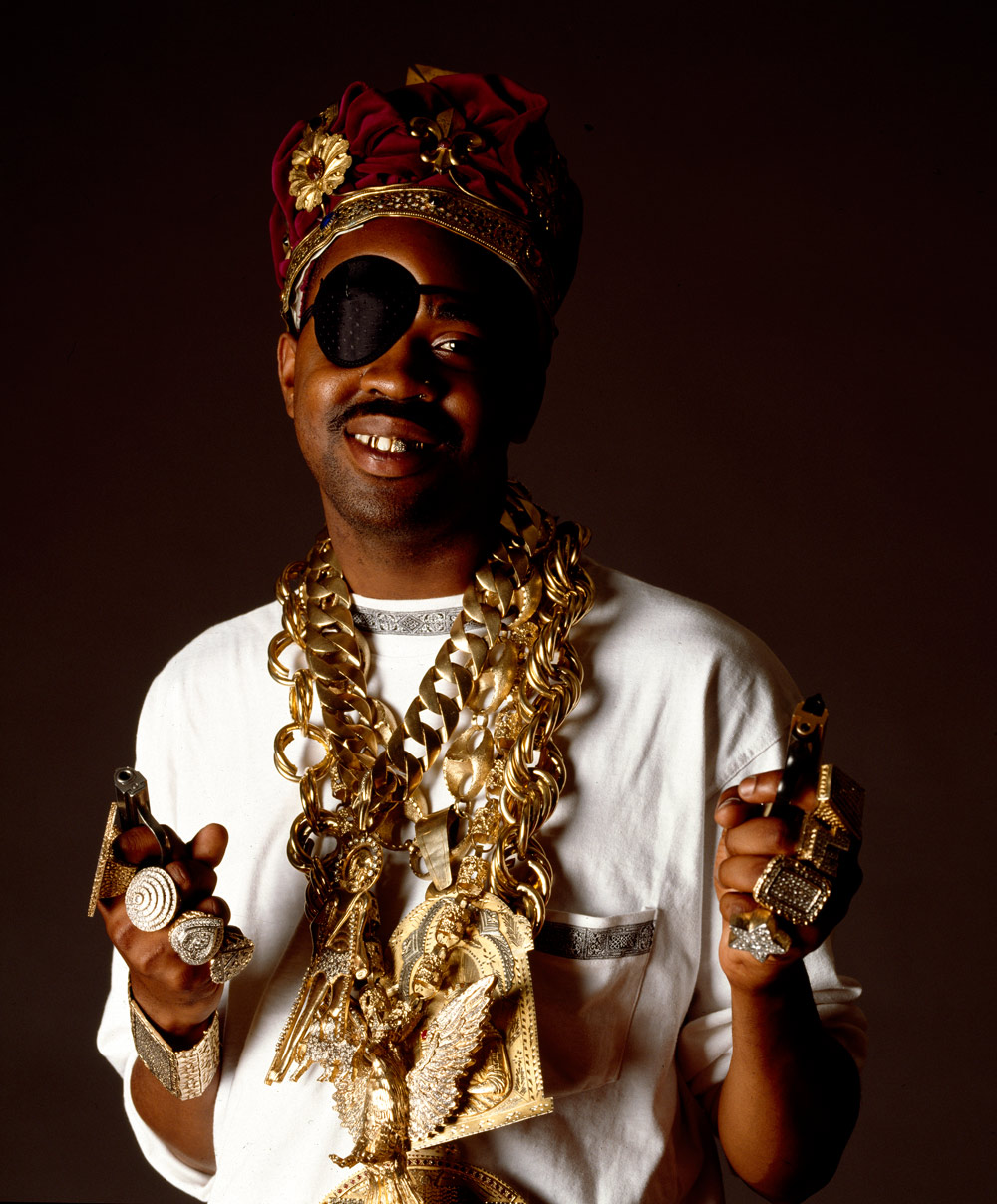
1x: What is unqiue about this photo compared to some of your other work?
Beckman: The unique thing is that it’s Slick Rick, he’s grabbing his crotch, which is the hip-hop thing. Everything in that picture, to me, is perfect. He’s got that little Fendi bag. It’s just an iconic picture. Slick Rick aka Rick The Ruler, There’s something simple and fresh about it.
1x: Describe the piece in one gut reaction word.
Beckman: Pure hip-hop attitude.
Slick Rick Manhattan 1989 by Janette Beckman – Click To Purchase
1x: What were some of your earliest artistic influences?
Beckman: I grew up in London, and it was kind of a middle class neighborhood, my mom was into the arts scene. She liked to paint, so I grew up growing to an artsy high school and I took a lot of art classes, I went to a lot of museums as a kid. The Victorian Albert Museum, the National Portrait Gallery, these were all free to go to in London. So we would go to all of these things for school. I saw a lot of paintings. I really loved portraits, I always thought I wanted to be a portrait painter. So I ended up going to art school. I thought after a year that my drawing skills weren’t good enough, so then I thought I’d try photography and I changed colleges and went to this different art school. Going to college in London it was free back in the day, unlike here, so it was kind of a slightly different thing. I just basically came out of college and studied teaching in college, so I started working with a youth club, and then I started photographing the early punk era and mods, all these two-tone and ska kids that were hanging around. That was about the time I started working for weekly music newspaper called Melody Maker. So they gave me 2-3 bands per week to shoot. I was never on staff, but I was a second stringer and it was great. I’d get to photograph The Clash, The Sex Pistols, Boy George, Paul Weller, The Jam, The Specials and all these bands. The punk era was really a great time in London.
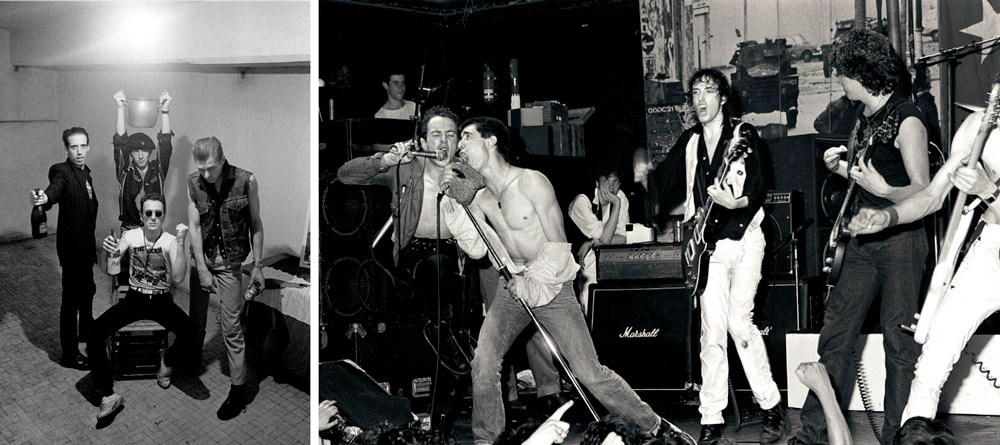
The Clash
The Sex Pistols / Rockats
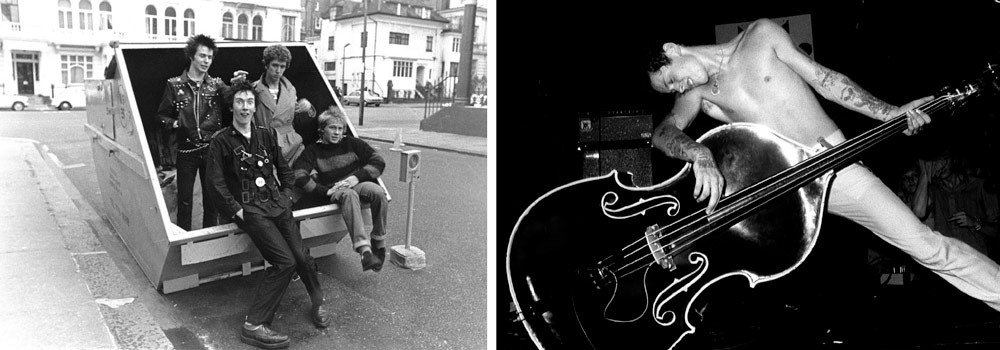
1x: This was during college?
Beckman: Yea, I had moved out of my parents place and was living in this place in South London. It was like a sort of semi-squat, not really, but my rent was like $7 per week. The whole building was full of art students. We didn’t have heat and we barely had hot water. It was just a place you lived with a bunch of students. We’d grow pot in the back garden, all that stuff that you do when you’re a student. Then I started working for this little music paper and I got this tiny dark room in the middle of town. It was in a building that had a hole in the ceiling and water would come in, and we’d have a bucket under the ceiling with all this water dripping through the roof. But it was really fun. It was around the corner from the paper. So you’d go out on the road with some band and it’d be one o’clock in the morning and you’d be playing music and you’d develop and contact all the stuff that you just shot. Then you’d come back in the morning, make a couple of prints and then you’d run it around to the papers. You weren’t getting paid much, probably 30$ per shoot, if that. On the other hand you would see this great music and take pictures. My rent was cheap, so I only needed coffee and bars of chocolate. I didn’t really need money for much. It was cool. It was really cool. So I did that from 1976 – 1982. I got to shoot the first Police and various other bands album covers. I had quite the little portfolio by then.
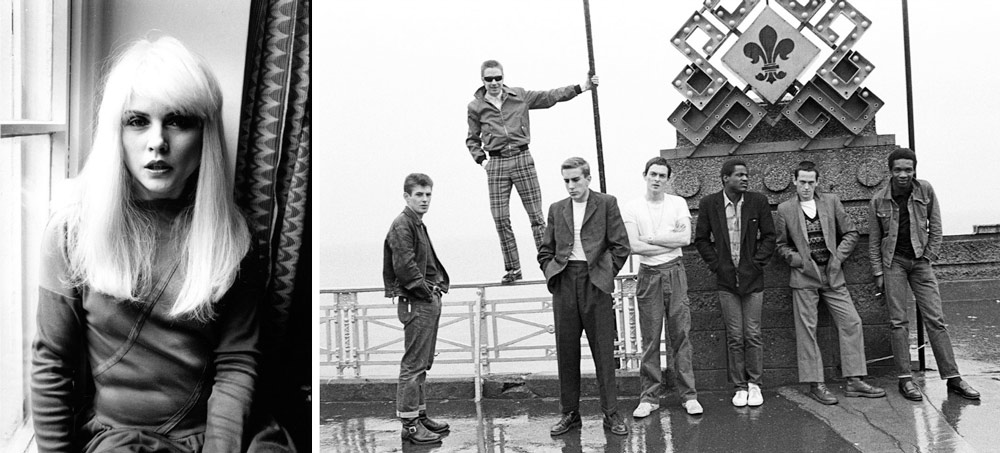
Debbie Harry of Blondie / The Specials
The Beat / Dee Dee Ramone of The Ramones

Then in 1982 I saw the first ever hip-hop concert to come to London. It was in the fall of 1982. My newspaper wanted to cover it, so of course I put my hand up. We had no idea what hip-hop was, we had heard a few things but by this time it hadn’t really permeated over to the UK. So I went to this show, I actually went to the hotel where they were all hanging out, and then that day I was just amazed at all these people. They looked so different from the punks that I was used to in London. So I just ran around the hotel with my camera, chatting to all the people in the hotel and taking pictures. It turned out that I had taken pictures of all of these artists and didn’t know who they were, but I just captured that. Then the concert at night was just mind-blowing. We’d never seen anything like that. You’ve got rappers and djs, graffiti going on in the background, breakdancing, all on the same stage at the same time. You just had to step back and say what the fuck? So I took pictures at the concert and it all ran in the paper, and then a month later I came to visit a friend in New York for Christmas and that was it. I ended up staying and all that stuff was just starting to happen all around me. So I started shooting for all these tiny little labels, Def Jam was still really small, Sleeping Bag, Next Plateau and Profile. It was great.
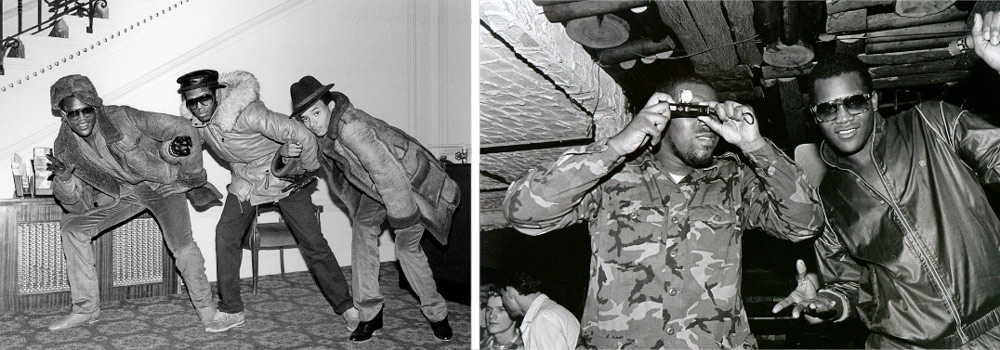
Shaheem, Grandmaster DST & The Godfather / Afrika Bambaata
Crazy Legs / Futura & Dondi

1x: Was that first show just a big showcase or was there one main headliner?
Beckman: Yea, it was a hip-hop showcase in a way. It was Futura, Dondi, Rammellzee, Grand Mixer DST, Fab Five Freddie, Afrika Bambaataa, The Rocksteady Crew, Double Dutch Girls…I mean the place was just icons. They were just icons, but I didn’t know who they were. I just thought this is really cool. It was just amazing. I loved the way they were dressed. They just looked different. The sound was completely different. We had never heard anything about scratching or mixing. The whole thing was great.
1x: What were some of your first published pieces where you realized you were onto something and making an impact with your photos?
Beckman: The first music photo that I had published, I went into music mag called Sounds, and I met the features editor Vivienne – who I am still friends with to this day oddly enough – and showed her my portfolio. I didn’t have any pictures of musicians at all, but she said I like your photos, what are you doing tonight? You can go photograph Siouxsie and the Banshees. I had no idea what to do, I had never photographed a band before in my life. But I did have a camera and I had film. So I just went along to The Roundhouse which was a huge venue at the time, and took pictures of them and they ran in the paper the next week. After that they liked my pictures and gave me one job and then another job and another job. So that’s where it all started. It’s all so crazy. I don’t know what it was about my other pictures that she liked. She obviously thought I was capable. So would be the first music picture that I took.
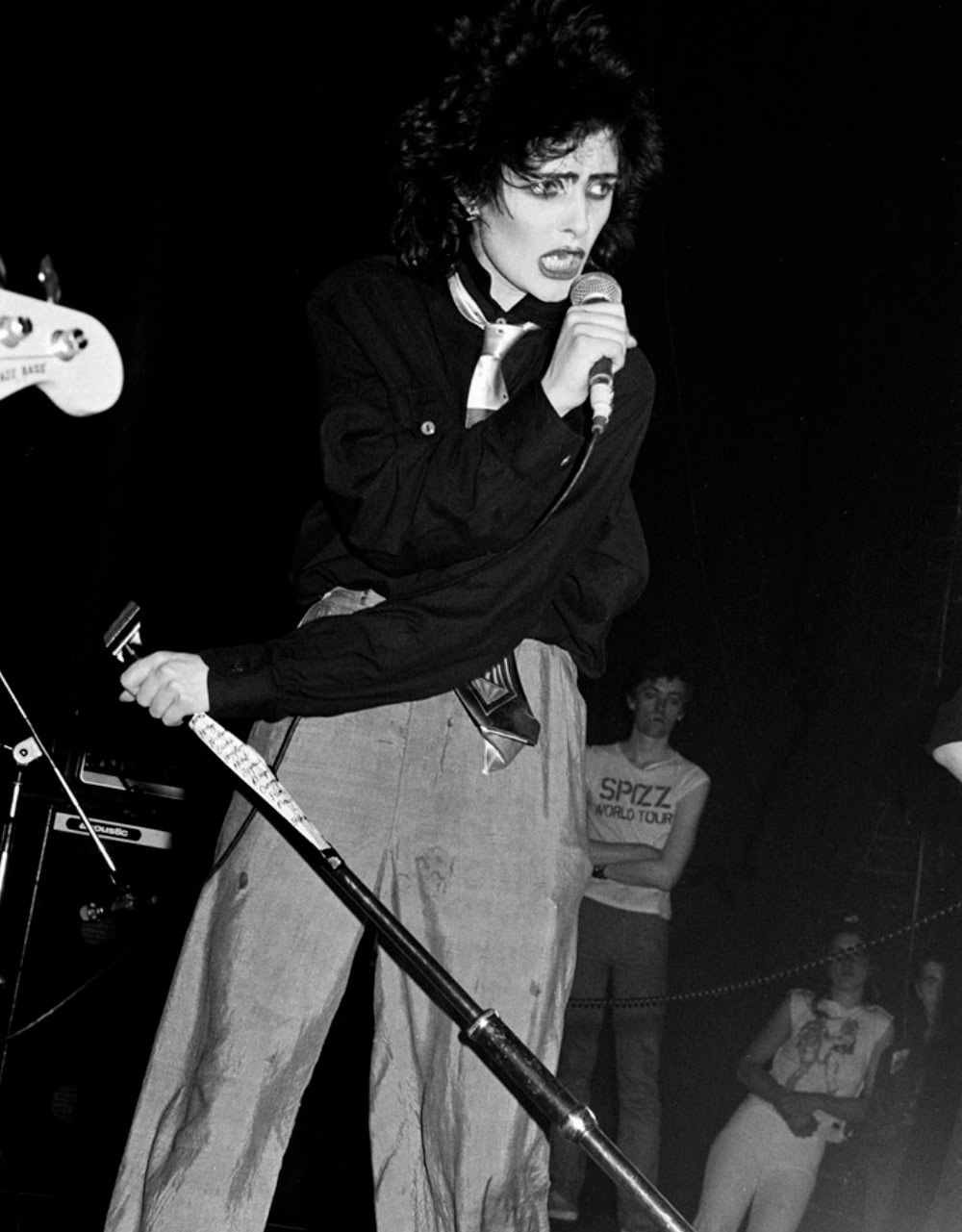
Souxxie & The Banshees
For the first album cover that I ever did, I had been taking my portfolio around and so I had a few by then, and I would taken them to record companies. One day I took them to A&M Records, and the art director was said there’s this punk band called The Police, so maybe you want to shoot them? So that was when I went out and got my Hasselblad camera. I thought a record cover is square, I need to get a square format camera. So I took all the money I had – it wasn’t that much – and I spent it on, what seemed to be to me, a hugely expensive camera. I bought the camera, 1 lens and two backs. We didn’t have assistants or anything in those days. It was just me and the art director and the band. We scoped out this location that was a tunnel by Waterloo Station on the south side of the river. We met the band and I took the picture. I managed to figure out how to get the picture and that was the first Police album cover. After that I did two more album covers and then a bunch of singles, EPs and all sorts of other things. It was strange looking back on it, but back then they were just three little punks. I had no idea who they were at all.
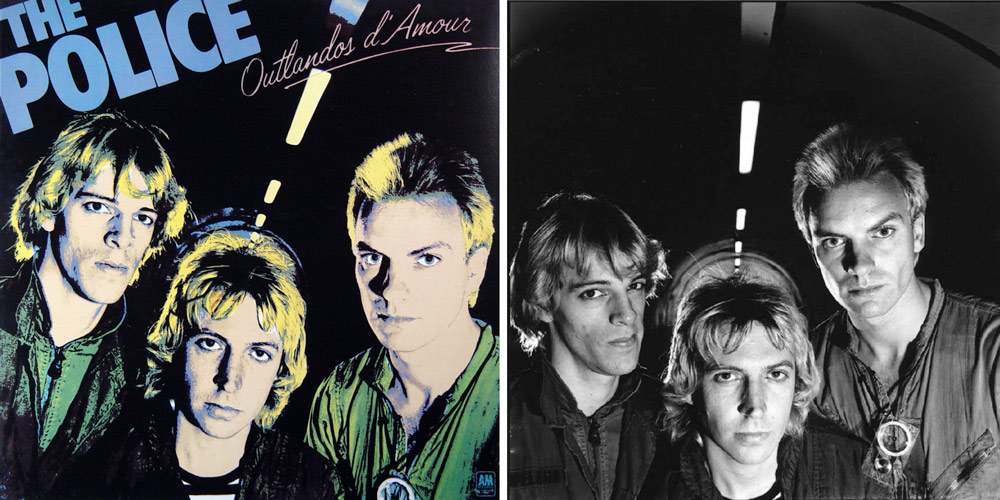
A lot of the bands that I photographed they were at the beginning stages of their career, it wasn’t like they big celebrities. When I took my first picture of RUN DMC in 1984 they certainly weren’t big celebrities. That’s the great time to get a hold of a band, before the record labels get a hold of them and start pushing them in different directions and telling them what to do.
1x: What artists inspired you early on?
Beckman: I was obsessed in college by this one photographer his name is August Sander. He’s a German photographer who was photographing around the late 1800s/early 1900s, and he was just photographing working people in Germany. They were all location photos, he’s got the working man, the artist, the mail man, you name it he’s got it. They were just very simple portraits of people in their natural environment. I was really obsessed with this book. I was so obsessed with it that I took it out from the college library and I ended up having to keep it because I didn’t dare take it back. I had it out for two years. I basically had to steal it. I loved him. I loved Irving Penn. William Cline. Lots of photographers. Richard Avedon. David Bailey. A lot of photographer’s influenced me, but August Sanders was kind of the one who influenced me daily.
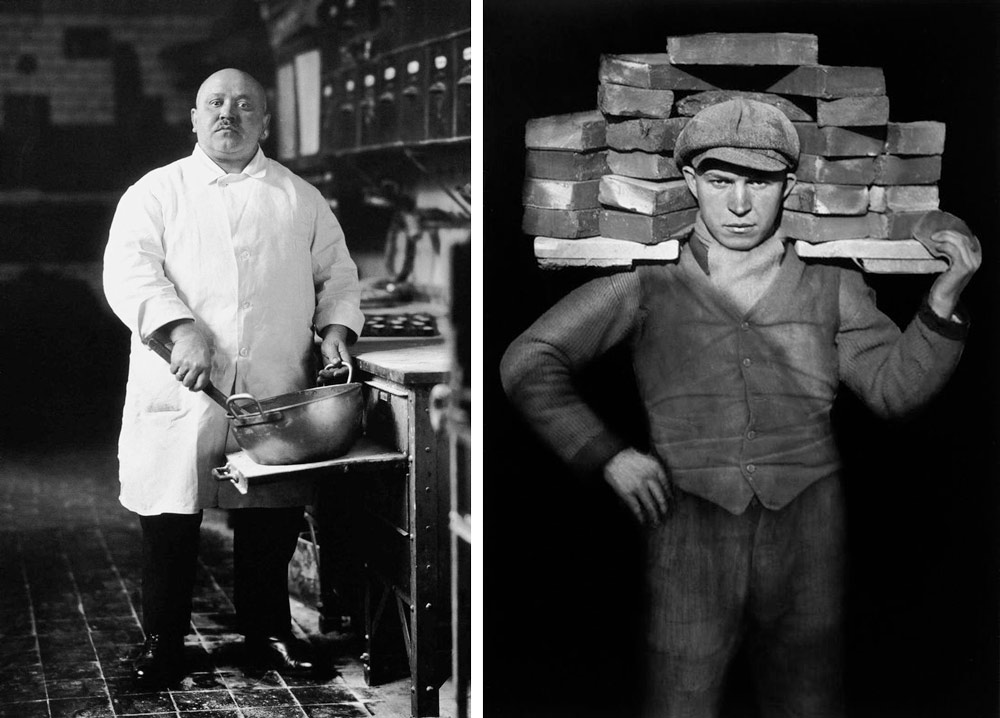 Photography by August Sander
Photography by August Sander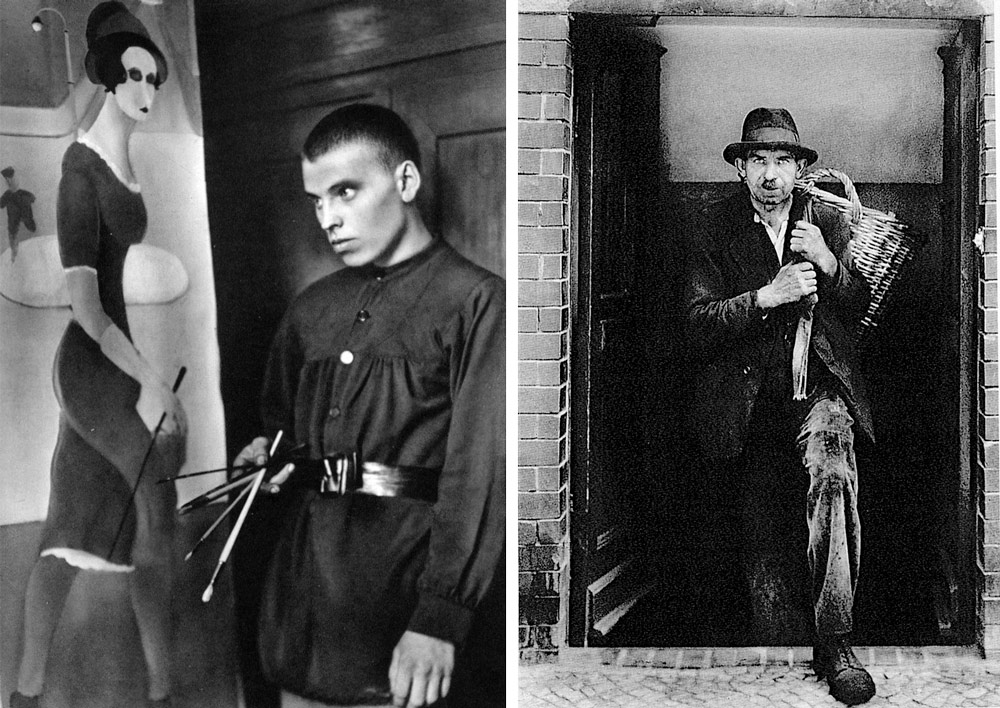
1x: What artists inspire you now?
Beckman: I actually just curated a big show at Photoville, which is a huge photo festival here. I had to figure out the best music photography from disco to now. There were a lot of great photographers, some of my favorites were Danny Clinch, Jim Marshall (RIP), Jamel Shabazz, Martha Cooper along with many others. I’m always looking at stuff that people do. For sure. The whole thing has really changed since digital came on the scene. Now if you’re a photographer you can go out with your camera and your cell phone and just take pictures. Which is a great thing in some ways, but then it does make people a little care free and a little careless. Maybe I shouldn’t say that…
1x: What do you mean?
Beckman: I think in a way digital is amazing. I shoot digital now and it really is incredible because you can take a 100 shots and if they aren’t right you can fix it in Photoshop. I’ve been on shoots where people have hired me and then say it’s fine we can just fix it in Photoshop later. I mean geez, you don’t you think you should try to get it right the first time? It’s a different attitude. But you can do anything in Photoshop. I really don’t like the way that Photoshop has enabled people to make everything look the same. When I was curating the Photoville show last year I was trying to find an interesting picture of Beyonce or Taylor Swift, and it’s not possible, because they look perfect and beautiful in every single shot that is available to you. You see where I’m going with this. In other words, there’s this false idea of perfection, this almost Barbie-like perfection that’s easy. Everybody wants every wrinkle eradicated to look 35 even if they’re 75. So they all look the same, and that’s a sad thing. I know a photograph that I took in 1987 is not being photo shop. If Slick Rick had a zit on the end of his nose then Slick Rick had a zit on his nose. That to me is part of history and it makes this timeline. It’s all part of it. If somebody had a scar on their face because they got in a fight yesterday, that is the way they were that day. It’s important to preserve those pieces of history. But now it’s so easy for them to eradicate all those interesting little details. That’s a sad thing to me.
1x: Do you listen to music while you work? Would you listen to the band that you were photographing? What were some of your favorites?
Beckman: When I was growing up in London I was really into Motown when I was kid, because that was what was on the radio. The
Motown Revue would come to London. I would go down every Saturday with a little pocket money or per diem, and I would always spend all of my money on the latest Motown single. That’s kind of what I grew up with. When I was a student we were into bands like Cream, Joni Mitchell, Elton John, Carole King all of that stuff. Then at the same time it was always the soul music. Disco was huge, I was very into that for a while. And of course hip hop and of course punk! When I was in the dark room, there’s nothing like some good soul music or house music, something like those mixes. When I was in London I was listening to a lot of early reggae stuff when I was in my dark room. All of the time. I have an friend who is an artist, Ian Wright, and he then he would make me a mix tape once week, and it’d be a lot of all of that stuff, reggae, soul and hip hop.Right now when I’m on the computer I’m listening to this deejay Russ Allen. He’s a British deejay that sends around mixes once a month and it’s a lot of that type of music.
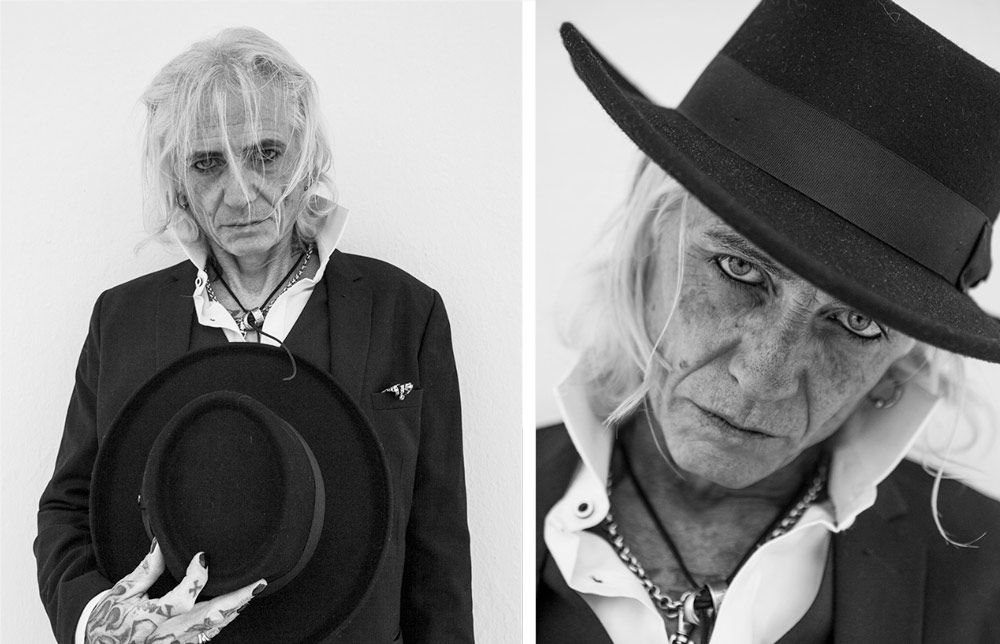
Ledfoot / Futura / Company Freak
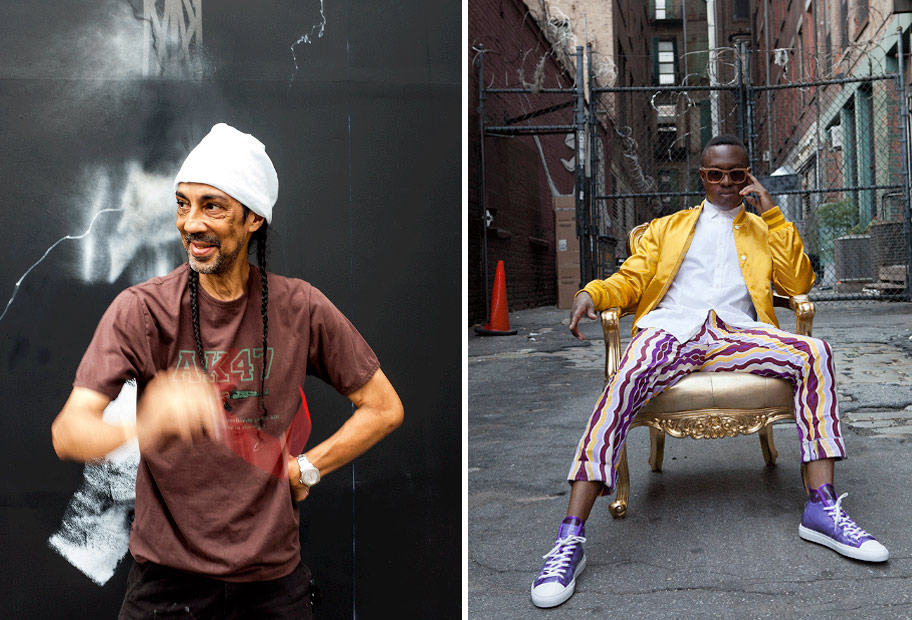
1x: Are you still working with up and coming bands?
Beckman: Yea! Definitely. I’d like to do more of that. Especially if I like the music. I love working with bands and artists. Recently I’ve worked with Robert Glasper and this guy Leadfoot who’s this kinda crazy, this Gothic blues guy from Finland. I’ve always loved to shoot young artists who are doing things. People that make music and make art. I still shoot a lot of graffiti-based artists.
1x: Now what percentage do you think you shoot film vs. digital?
Beckman: I just did a job for Shinola at the end of last year, and they asked me to shoot some film. That was pretty exciting, I got out my old Hasselblad and shot a whole bunch of film. That was really cool. But normally it’s pretty much all digital if I am doing work for other people now it’s mostly all digital. There’s the odd little bits of film that will come around for some excitement from time to time. Unfortunately the dark room that I print at closed. So I don’t know what I’m going to do about that, I really miss being in the dark room, it’s a very zen thing. I’d say I’ve got to make 6 prints, and I’d bring a cup of tea and then I’d be in there all day. You didn’t really need to come ut, you just get into zen mode and you’d be grooving to the music and printing. It was great. I do miss that.
1x: What was the first piece of art that you bought? Do you still have it?
Beckman: Actually I worked for this art press called The Petersburgh Press between school and college. They published these giant prints for the likes of David Hockney, Jim Dine and Edwardo Pollozzi. So they were the publisher of those guys. It was a tiny little place, this guy was running it out of his home, but he had amazing pop artists on his roster. So at night they would throw out the prints that weren’t quite right, they’d put them in the garbage and I’d just go through the garbage and take it home. I wouldn’t say “bought it” but I had this massive Jim Dine Dressing Gown print. It was as big as me. I had it hanging over my bed. It wasn’t signed, but I didn’t realize how valuable it was so I just wheat pasted it to the wall. It ended up getting all wet, and then it got mold all over it. It basically just disintegrated. I had a David Hockney painting that had been torn in half and glued back together. That was the first art that I started to collect. Out of the garbage. It was massive. That was the first kind of pop art. Then of course being in art school I had art friends, and I’d get drawings off of them. Those were the first pieces that I had. Do I still have them? No, they’re gone. I think my most precious thing that I have was a piece that I got when I did this Keith Haring picture in 1985, he gave me this massive Free South Africa poster and he signed it. I’m looking at it right now. It’s right here by my desk. Everybody keeps telling me that’s probably worth money. But I would never sell that. Keith gave that to me. But as far as buying art, yes I definitely would buy art from people. Cey and I did this Bond Street print shop thing, and we sell our friends art, and you can’t help but have to acquire little bits and pieces down the road.
 Jim Dine / Keith Haring
Jim Dine / Keith Haring
1x: What advice would you give to up and coming photographers?
Beckman: I would tell them to follow your passion and find something you really can immerse yourself in and then go immerse yourself in that. Figure out who it is that you want to be as a photographer and follow a path. Don’t be influenced if somebody says that your work isn’t going to go anywhere, make it better but don’t stop doing it. You really need to follow your passion, that really is the number one thing. I think you have to just love what you do and that will it better.
1xRUN: What have you been up to so far this year?
Beckman: This year I found about this really interesting thing called Fight Ball, it’s this 1 on 1 basketball tournament in a club environment. They’d have a dj, everybody’s drinking and they’ve got a basketball court for 1 on 1 in the middle of the club. These people scouted all around the world to find the best players. Then it was just a playoff, and I went to the final and saw the winner take hime $100,000. He was a street guy from Washington D.C. So that was a really cool thing to shoot. I’d gone there earlier in the day and got to do portraits of all of the competitors and then got to shoot everything at the final event.
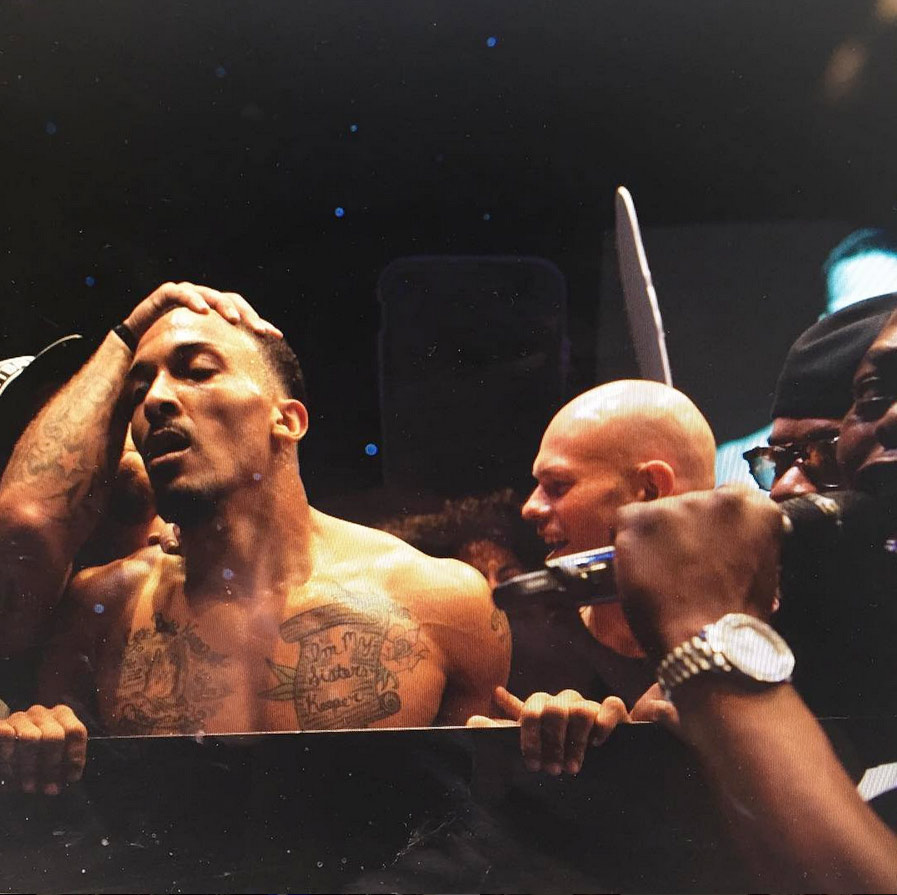 Fight Ball
Fight Ball
I’ve also been working with Jose James, the jazz guy and we’ve been trying to do a book. I’ve been following him for about 2-3 years, and I’ve done a lot of his album covers. I’m also the New York editor for this magazine called Jocks and Nerds. So that enabled me to head to Detroit and I shot all kinds of fun people like Adam Findler and head to these strange clubs. I meet the Shinola guys. I went to the Slow Roll all of this British magazine. They were doing a story on Detroit and how it’s coming back. So that was great. That’s a good magazine for me, they enable me to do interesting things that I want. I can suggest things to them, so when I found out about Fight Ball I just emailed saying the tournament is tomorrow, and they said great. So now they’re sending a writer, it’s cool. We I’m supposed to do a whole bunch of stuff with this guy while he’s here.
1x: Any upcoming exhibitions or events that you have?
Beckman: My solo exhibition LA Rebels opens April 9th and will remain on display at Project Gallery until May 21, 2016. Check out more at ProjectGallery.com
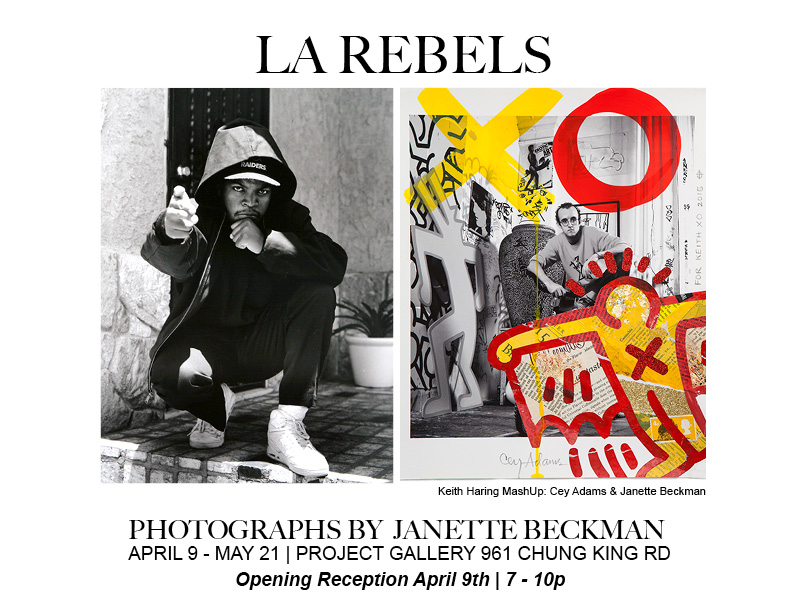
1xRUN: Where else can people find out more information about you?
Janette Beckman: Website – Facebook @Janette Beckman – Instagram @janettephoto
-1xRUN
Janette Beckman was interviewed while at her Manhattan Studio by 1xRUN Editor-In-Chief Pietro Truba. He has previously interviewed Ricky Powell, Doze Green, Fred Armisen and Shepard Fairey among others. Follow him @pietrotruba.
All photos courtesy of Janette Beckman, except for the portrait photos of Janette taken by Gudrun Georges. Follow her @gudrungeorges.
